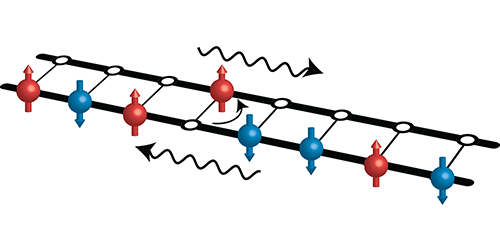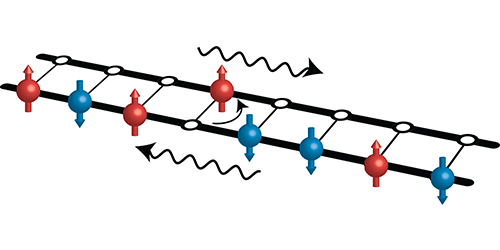ARPES with Cold Atoms
The atoms in a gas are normally easier to manipulate than the electrons in a solid, which is why physicists often use ultracold gases as analogs of condensed-matter systems. To probe these ultracold gases, a numerical study proposes using an analog of a condensed-matter experimental technique, called angle-resolved photoemission spectroscopy, or ARPES. If realized, such ARPES-like experiments would provide detailed spectra of the atoms in an ultracold gas. The approach could also provide a new avenue for exploring the physics underlying high-temperature superconductors.
ARPES is a common tool for investigating strongly correlated electrons in solids, such as topological materials and superconductors. The method uses a beam of light to kick out electrons whose momentum and energy are then measured. The spectrum of these photoemitted electrons reveals information about the electronic band structure in the material.
Annabelle Bohrdt from the Technical University of Munich in Germany and her colleagues envisaged ARPES-like measurements in the framework of quantum gas microscopy. The team’s proposed setup is a 1D optical lattice holding a chain of ultracold atoms. A tunable modulation to the lattice’s optical fields excites one atom from this 1D gas, causing it to be kicked into an adjacent “detection” lattice that is initially empty. The authors show how the momentum of this “photoemitted” atom can be measured by essentially letting it rattle around inside the detection lattice. In numerical simulations, the team generated an ARPES-like spectrum by varying the excitation energy for the kicked-out atoms. This technique could potentially be used to study quantum correlations among atoms that have been prepared to simulate a particular condensed-matter model. One such model might be the Fermi-Hubbard model, which is thought to be relevant to superconductivity.
This research is published in Physical Review B.
–Michael Schirber
Michael Schirber is a Corresponding Editor for Physics based in Lyon, France.





